GCSE AQA Geography Section C: The UK Physical Landscape and Coastal landscapes in the UK
5.0(1)
5.0(1)
Card Sorting
1/54
Earn XP
Description and Tags
Study Analytics
Name | Mastery | Learn | Test | Matching | Spaced |
|---|
No study sessions yet.
55 Terms
1
New cards
What is a Sea Wall, its benefits and cons?
What is it?
- hard engineering, hard material like concrete to sea
Benefits
- prevents erosion
- prevents flooding acting as a barrier
Cons
- expensive to build + manufacture
- creates a strong backwash eroding under the wall
- hard engineering, hard material like concrete to sea
Benefits
- prevents erosion
- prevents flooding acting as a barrier
Cons
- expensive to build + manufacture
- creates a strong backwash eroding under the wall
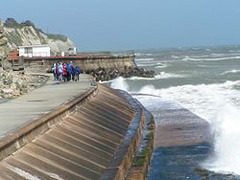
2
New cards
What does relief refer to?
Relief refers to the way the landscape changes in height.
3
New cards
Give examples of where upland areas are found in the UK
England: e.g. Lake District is a national park, popular with tourists; upland area with lots of glacial features.
Wales: e.g. Snowdonia is a glaciated upland area formed from rock from an extinct volcano containing steep mountains such as Snowdon and glaciated valleys
Wales: e.g. Snowdonia is a glaciated upland area formed from rock from an extinct volcano containing steep mountains such as Snowdon and glaciated valleys
4
New cards
Give examples where lowland areas are found in the UK?
East Anglia: e.g. The fens are a marshy, flat, low-lying area which used to be a lot larger but have now been drained for farming
Glasgow: e.g. River Clyde Lower Valley is situated on flat ground of the Clyde's flood plain
Glasgow: e.g. River Clyde Lower Valley is situated on flat ground of the Clyde's flood plain
5
New cards
What are the UK's main upland areas made of? + where are they mainly situated?
Situated in the north/west of country formed of hard, igneous and metamorphic rock resistant to erosion
6
New cards
What are the UK's main lowland areas made of? _ where are they mainly situated?
Situated in the south/east formed of softer, sedimentary rocks that erode more easily
7
New cards
Describe and explain the characteristics of constructive waves
- Low frequency being low + long
- Swash is more powerful than backwash, so material is deposited
- Swash is more powerful than backwash, so material is deposited
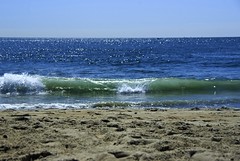
8
New cards
Describe and explain the characteristics of destructive waves
- High frequency being high + steep
- Backwash (moving down the beach) is more powerful than their swash (water moving up the beach) so material is removed
- Backwash (moving down the beach) is more powerful than their swash (water moving up the beach) so material is removed
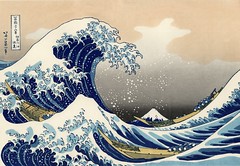
9
New cards
What is swash?
Movement of water up the beach
10
New cards
What is backwash?
The movement of water down the beach
11
New cards
What is chemical weathering?
The breakdown of rock by changing its chemical composition e.g. carbonation weathering
12
New cards
Explain how freeze-thaw mechanical weathering works
[happens when temperature alternates above/below 0°C]
1. water enters cracks in rock e.g. granite
2. water freezes + expands putting pressure on the rock
3. water thaws contracting releasing pressure on the rock
4. repeated freezing and thawing widens cracks and breaks the rock up
1. water enters cracks in rock e.g. granite
2. water freezes + expands putting pressure on the rock
3. water thaws contracting releasing pressure on the rock
4. repeated freezing and thawing widens cracks and breaks the rock up
![[happens when temperature alternates above/below 0°C]
1. water enters cracks in rock e.g. granite
2. water freezes + expands putting pressure on the rock
3. water thaws contracting releasing pressure on the rock
4. repeated freezing and thawing widens cracks and breaks the rock up](https://knowt-user-attachments.s3.amazonaws.com/356b8743f9594806b796e27e650459d0.png)
13
New cards
What is mechanical weathering?
The breakdown of rock without changing its chemical composition e.g. freeze-thaw weathering
14
New cards
Explain how carbonation weathering works
1. Rainwater has CO2 dissolved in it making a weak carbonic acid
2. carbonic acid reacts with the rock containing calcium carbonate e.g. carboniferous limestone which is a rock dissolved by rock
2. carbonic acid reacts with the rock containing calcium carbonate e.g. carboniferous limestone which is a rock dissolved by rock

15
New cards
What is mass movement?
The shifting of rocks and loose material down a slope e.g. cliff
16
New cards
When does mass movement happen?
When the force of gravity acting on a slope is greater than the force supporting it
17
New cards
What does mass movement cause?
Coasts to retreat rapidly
18
New cards
When is mass movement likely to happen?
When material is full of water - water acts as a lubricant making the material heavier
19
New cards
Explain how mass movement works
1. SLIDES
- material shifts in a straight line along a slide plane
2. SLUMPS
- material rotates along a curved slip plane creating a scarps
3. ROCKFALLS
- material breaks up, often along bedding planes falling down the slope
- material shifts in a straight line along a slide plane
2. SLUMPS
- material rotates along a curved slip plane creating a scarps
3. ROCKFALLS
- material breaks up, often along bedding planes falling down the slope
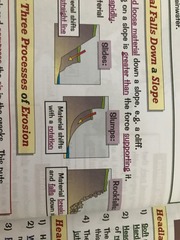
20
New cards
What are the three types of erosion?
Hydraulic power, Abrasion and Attrition
21
New cards
What is Hydraulic power?
Waves crashing against rocks compressing the air, pressures the rock and it widens and cracks
22
New cards
What is abrasion?
Eroded particles in water scrape and rub against rock, removing small pieces
23
New cards
What is attrition?
Eroded particles in water collide breaking into small rounded pieces
24
New cards
Explain how longshore drift works
1. Waves follow the direction of the prevailing wind (most common)
2. Hits the coast at an oblique angle (not a right-angle)
3. Swash carries material up the beach in the same direction as the waves
4. Backwash carries material down the beach at right angles, back towards the sea
5. Material zigzags along the coast
2. Hits the coast at an oblique angle (not a right-angle)
3. Swash carries material up the beach in the same direction as the waves
4. Backwash carries material down the beach at right angles, back towards the sea
5. Material zigzags along the coast
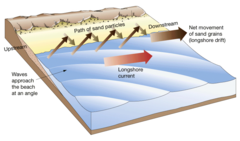
25
New cards
When does deposition occur?
Water carrying sediment slows down so that it isn't moving fast enough to carry so much sediment
26
New cards
When do coasts build up?
When the amount of deposition is greater than the amount of erosion
27
New cards
What contributes to an increased number of material deposited?
- When there's lots of erosion somewhere else so there is more material available
- lots of material is transported into the area
- lots of material is transported into the area
28
New cards
What does deposition and longshore drift create?
Spits
29
New cards
How material is transported depends on...
- power of the water
- size of the particles
- size of the particles
30
New cards
What is traction?
Large particles like boulders are pushed along the river bed by the force of the water [IMAGINE TRACTOR WHEELS]
![Large particles like boulders are pushed along the river bed by the force of the water [IMAGINE TRACTOR WHEELS]](https://knowt-user-attachments.s3.amazonaws.com/87a404f168904ef18175f27225c4f35f.png)
31
New cards
What is suspension?
Small particles like silt and clay are carried along by the water
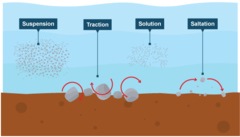
32
New cards
What is saltation?
Pebble sized particles are bounced along the river bed by the force of the water
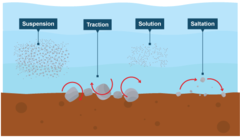
33
New cards
What is solution?
Soluble materials dissolve in the water and are carried along
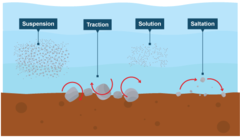
34
New cards
What is a concordant coastline?
The alternate bands of hard and soft rock are parallel to the coast
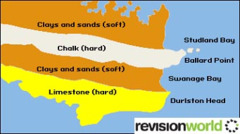
35
New cards
What is a disconcordant coastline?
They are made up of alternating bands of hard and soft rock at right angles to the coast
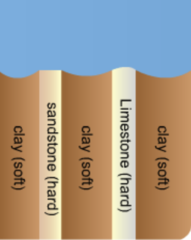
36
New cards
How do headlands and bays form?
Bands of resistant and less resistant rock outcrop at right angles to the coast. Softer rocks erode faster = bay, harder rocks stick out = headlands.
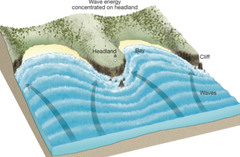
37
New cards
How are headlands eroded to form caves, arches and stacks?
1. resistant rock makes up headlands but has cracks
2. waves crash into headlands enlarging cracks (by hydraulic power + abrasion)
3. repeated erosion and enlarging cracks forms a cave
4. continued erosion deepens cave until it breaks through forming an arch (e.g. Durdle Door, Dorset)
5. erosion continues to wear rock away and eventually collapses
6. forms a stack, a separate rock from the headland e.g. Old Harry in Dorset
2. waves crash into headlands enlarging cracks (by hydraulic power + abrasion)
3. repeated erosion and enlarging cracks forms a cave
4. continued erosion deepens cave until it breaks through forming an arch (e.g. Durdle Door, Dorset)
5. erosion continues to wear rock away and eventually collapses
6. forms a stack, a separate rock from the headland e.g. Old Harry in Dorset
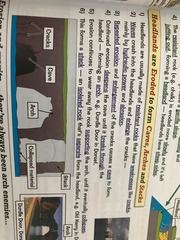
38
New cards
How do wave cut platforms form?
1. waves cause erosion at the foot of a cliff, forming a wave-cut notch enlarged over time
2. repeated erosion causes rock above notch to become unstable and collapse
3. collapsed material is washed away + cycle repeats
4. after repeated collapsing, cliff retreats leaving a wave-cut platform e.g. Southerndown, South Wales
2. repeated erosion causes rock above notch to become unstable and collapse
3. collapsed material is washed away + cycle repeats
4. after repeated collapsing, cliff retreats leaving a wave-cut platform e.g. Southerndown, South Wales
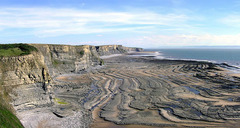
39
New cards
How are sand beaches formed?
Created by low energy waves and are flat + wide - sand particles are small, weak backwash can move them back down the beach, creating a long, gentle slope
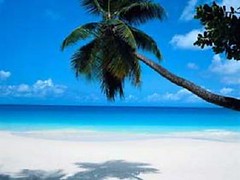
40
New cards
How are shingle beaches formed?
Created by high energy waves and are steep + narrow - sand particles are washed away but larger shingle is left behind; single particles build up to create a steep slope.
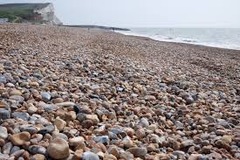
41
New cards
How are spits formed?
1. spits form at sharp bends in the coastline e.g. at a river mouth
2. long-shore drift transports sand and shingle past the bend and deposits it in the sea
3. strong winds + waves curves end of the spit
4. area behind spit is sheltered from waves, so material accumulates and plants are able to grow
5. the sheltered area becomes mud flat or a salt marsh e.g. Welwick Saltmarsh, Yorkshire
2. long-shore drift transports sand and shingle past the bend and deposits it in the sea
3. strong winds + waves curves end of the spit
4. area behind spit is sheltered from waves, so material accumulates and plants are able to grow
5. the sheltered area becomes mud flat or a salt marsh e.g. Welwick Saltmarsh, Yorkshire

42
New cards
How are bars formed?
1. a bar forms when a spit joins two headlands together
2. the bay between the headlands gets cut off from the sea
3. means a lagoon can form behind the bar
4. offshore bars can form if the coast has a gentle slope - friction with sea bed causes waves to slow down and deposit sediment offshore, creating a bar not connected to the coast
2. the bay between the headlands gets cut off from the sea
3. means a lagoon can form behind the bar
4. offshore bars can form if the coast has a gentle slope - friction with sea bed causes waves to slow down and deposit sediment offshore, creating a bar not connected to the coast
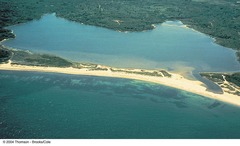
43
New cards
How are sand dunes formed?
1. Sand dunes (e.g. Camber Sands, East Sussex) are formed when sand deposited by long-shore drift is moved up the beach by the wind
2. obstacles decrease cause wind speed so sand is deposited, forming small embryo dunes
3. embryo dunes are colonised by plants & the roots of the vegetation stabilise the sand, encouraging more sand to accumulate there forming fore-dunes and eventually mature dunes and new embryo dunes form in front of stabilised dunes
4. dune stacks (small pools) can form in hollows between dunes
2. obstacles decrease cause wind speed so sand is deposited, forming small embryo dunes
3. embryo dunes are colonised by plants & the roots of the vegetation stabilise the sand, encouraging more sand to accumulate there forming fore-dunes and eventually mature dunes and new embryo dunes form in front of stabilised dunes
4. dune stacks (small pools) can form in hollows between dunes
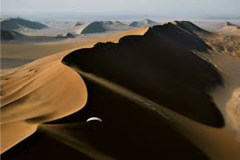
44
New cards
What land forms are caused by erosion? + how to find them on a map
1. Caves, Arches and Stacks
- caves + arches cannot be found on a map
- stacks look like little blobs in the sea
2. Cliffs and Wave- cut Platforms
- cliffs are shown on maps as little black lines
- Wave-cut Platforms are shown as bumpy edges along the coast
- caves + arches cannot be found on a map
- stacks look like little blobs in the sea
2. Cliffs and Wave- cut Platforms
- cliffs are shown on maps as little black lines
- Wave-cut Platforms are shown as bumpy edges along the coast
45
New cards
What land forms are caused by deposition? + how to find them on a map
1. Beaches
- sand beaches are shown on maps as a pale yellow
- shingle beaches are shown as white or yellow with speckles
2. Spits
- shown by a beach that carries on out to sea but is still attached to land, there may be a sharp bend in the coast
- sand beaches are shown on maps as a pale yellow
- shingle beaches are shown as white or yellow with speckles
2. Spits
- shown by a beach that carries on out to sea but is still attached to land, there may be a sharp bend in the coast
46
New cards
Explain different types of coastal land forms in The Dorset Coast (Durdle Door)
Durdle Door
- example of an arch formed on a concordant coastline
- after the band of limestone was eroded the bands of softer rock behind this eroded quickly, the remaining limestone was a headland. Wave action opened up a crack in the side of headland which developed into an arch
- example of an arch formed on a concordant coastline
- after the band of limestone was eroded the bands of softer rock behind this eroded quickly, the remaining limestone was a headland. Wave action opened up a crack in the side of headland which developed into an arch
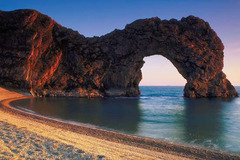
47
New cards
What is hard engineering?
Man-made structures built to control the flow of rivers and reduce flooding.
48
New cards
What is soft engineering?
Schemes set up using knowledge of a river and its processes to reduce the effects of flooding
49
New cards
What is a Gabion, its benefits and cons?
What is it?
- hard engineering, wall of wire cages filled with rocks built at the foot of cliffs
Benefits
- absorbs wave energy reducing erosion
- cheap + easy to build
Cons
- ugly
- wire cages corrode over time
- hard engineering, wall of wire cages filled with rocks built at the foot of cliffs
Benefits
- absorbs wave energy reducing erosion
- cheap + easy to build
Cons
- ugly
- wire cages corrode over time
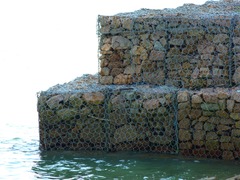
50
New cards
What is rock armour, its benefits and cons?
What is it?
- hard engineering, boulders piled up along the coast
Benefits
- absorbs wave energy reducing erosion + flooding
- fairly cheap defence
Cons
- boulders can be moved around by strong waves so they need to be replaced
- hard engineering, boulders piled up along the coast
Benefits
- absorbs wave energy reducing erosion + flooding
- fairly cheap defence
Cons
- boulders can be moved around by strong waves so they need to be replaced
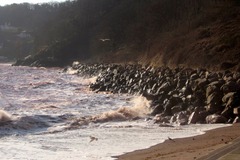
51
New cards
What are Groynes, its benefits and cons?
What is it?
- hard engineering, wooden/stone fences are built at right angles to the coast trapping material transported by long-shore drift
Benefits
- creates wider beaches slowing down the waves
- gives greater protection from flooding + erosion
- fairly cheap defence
Cons
- starves beaches further down the coast of sand, making them more narrow
- narrow beaches don't protect the coast very well so this leads to erosion
- hard engineering, wooden/stone fences are built at right angles to the coast trapping material transported by long-shore drift
Benefits
- creates wider beaches slowing down the waves
- gives greater protection from flooding + erosion
- fairly cheap defence
Cons
- starves beaches further down the coast of sand, making them more narrow
- narrow beaches don't protect the coast very well so this leads to erosion
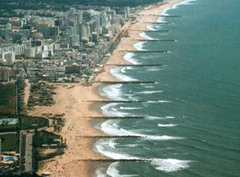
52
New cards
What is beach nourishment and reprofiling, its benefits and cons?
What is it?
- soft engineering, sand and shingle from elsewhere is added to the upper parts of the beach
Benefits
- creates wider beaches slowing down the waves
- gives greater protection from flooding + erosion
Cons
- taking material from seabed kills organisms like sponges + corals
- very expensive
- has to be repeated
- soft engineering, sand and shingle from elsewhere is added to the upper parts of the beach
Benefits
- creates wider beaches slowing down the waves
- gives greater protection from flooding + erosion
Cons
- taking material from seabed kills organisms like sponges + corals
- very expensive
- has to be repeated
53
New cards
What is dune regeneration, its benefits and cons?
What is it?
- soft engineering, creating/restoring sand dunes by nourishment or by plant vegetation to stabilise the sand
Benefits
- creates a barrier between land and sea absorbing wave energy, preventing flooding and erosion
- stabilisation is cheap
Cons
- limited to small area
- nourishment is expensive
- soft engineering, creating/restoring sand dunes by nourishment or by plant vegetation to stabilise the sand
Benefits
- creates a barrier between land and sea absorbing wave energy, preventing flooding and erosion
- stabilisation is cheap
Cons
- limited to small area
- nourishment is expensive
54
New cards
What is managed retreat?
Removing an existing defence and allowing the land behind it to flood
55
New cards
How are managed retreats effective? + potential conflicts?
- Over time the land will become marshland, which protects the land behind it from flooding + erosion
- Cheap and easy strategy + no maintenance
- Creates new habitats for plants and animals
However flooding farmland affects livelihood of farmers and saltwater can have a negative effect on existing ecosystems
- Cheap and easy strategy + no maintenance
- Creates new habitats for plants and animals
However flooding farmland affects livelihood of farmers and saltwater can have a negative effect on existing ecosystems